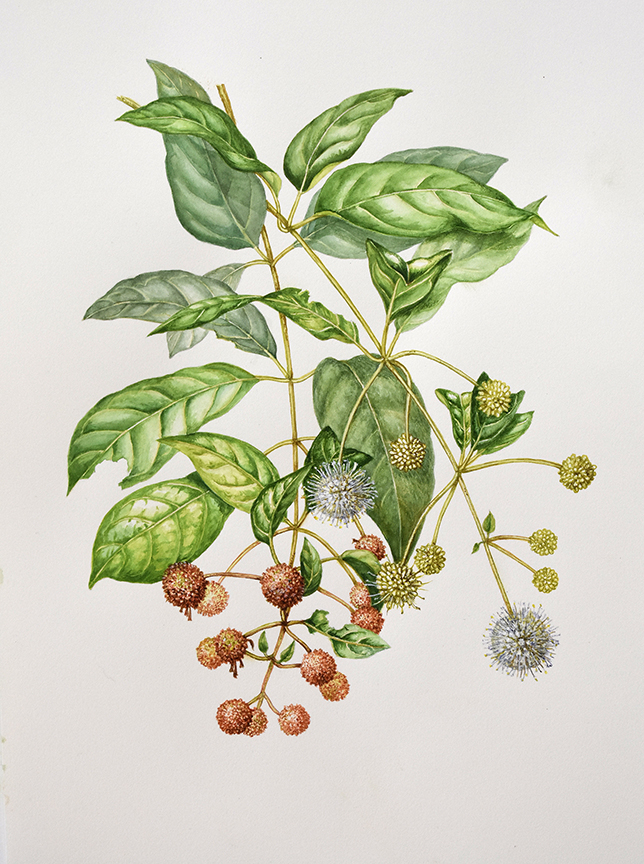 |
| Christmas week sketches. |
Last Sunday's snow amounted to about four inches, but the sleet showers that followed left a hard crust of ice about half an inch thick or more in places--treacherous to try to walk in! With daytime highs in the 20's, this is not a good time of the year to go outside looking for specimens to sketch, so I've been focusing on dried plant material I'd collected earlier, and plants from my indoor garden.
The Asian bittersweet vine above was collected at Summerset, the historic estate that I've been documenting in watercolor paintings. The miniature pomegranate was collected at Blandy Farm; the earlier warm spell around Christmas was ideal for walks, and adding to my collection of plant oddities. The rest are all dried specimens from my garden or from my indoor plants, some of which bloom at this time of the year.
 | |
| Last week of the year and New Year's Day. |
 |
| First week of the year. |
I even drew a snow cap on the dried 'Autumn Joy' sedum flowers on this page (though I collected it before it snowed) to commemorate the first snow of the year, which I covered in this blog earlier--it's been the prettiest snowfall thus far.
 |
| Last week. |
One of my dark-leaved winged begonias is blooming, and despite having grown this type of begonia for over twenty years, I don't recall ever drawing its flowers. The male flowers are in bud in this sketch, the female flowers, which will emerge later from the same cluster, are just tiny specks barely showing at this stage. One of my common witch hazel trees is starting to bloom, despite the bitter cold outside--I clipped a small branch to force indoors and sketched it.
I try to place each individual sketch on a given set of pages in different positions, so that each spread presents a different design from the previous pages, yet "reads" as flowing from one to the next. I can't wait to record the first signs of spring, which is still so far away!














































